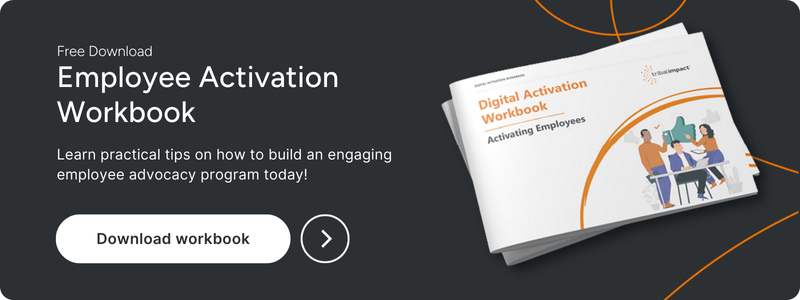The case for employee advocacy has never been stronger: 44% of decision-makers say they will be personally less receptive to sales calls and marketing outreach during an economic downturn (Edelman and LinkedIn 2022).
It's no longer a question of whether to launch an employee advocacy program, but more a question of ‘How much should I budget’. Costs will vary depending on how many employees you have, the tool that you decide to use (there are many of varying costs), and the resources that you have.
We’ve rounded up six essential tips to help you budget for a successful program in 2023 and beyond.
1. Leadership Buy-In
First and foremost is the challenge of getting buy-in from the people who hold the purse strings. As Anita Veszeli from Ericsson discusses, it’s about learning the language of the people who sign off on the investment.
“I went to some of our controllers and asked them how they make decisions. What are the things I need to learn…if I am able to translate this into his language, then I have a lot better chance of getting that buy-in…and usually ask for more than what you really need because you’re going to get at least something to get started!”
2. Tool Budget
Starting a new program? Rather than going all-in, it could be better to first purchase advocacy tool licenses for approximately 5% - 10% of your entire employee community. This can help you to figure out if your employees are likely to make good use of these tools. A good benchmark is to see how many employees shared content in the last 30 days (using LinkedIn Sales Navigator).
As you scale your program, you'll move towards a companywide license, but not for starting out - start small and plan your growth intentionally. This will allow you to keep track of your expenses and only pay for what you need.
3. Training Budget
Budget approximately 30% - 50% of your total tool license spend towards enablement and training. This includes onboarding materials, program branding, community training, policy and guidance, coaching support, office hours, curator training, fast-track coaching for leaders, and program material itself. These aspects can be far more important than additional fluff, and you and your employees may gain more from it.
‘You need to put as much effort into the enablement program as you do the tool’.
At Tribal Impact, we build multi-media frameworks to train the masses, train the many and train the few. This can allow us to tailor packages to your company’s needs. The needs of a small company may differ greatly from that of an institution boasting thousands of employees. If you've recently started out, you might want to gain results quickly. Don't underestimate this part, as it could make or break your entire program.
4. Reporting Budget
Budget for 25% of your headcount per month for advocacy data review, insight analysis, and visualisation along with recommendations.
You will need to measure your advocacy impact, connect the data dots to see how it's impacting other metrics, refine your program and build a case for scale - getting comfortable with data is critical.
Taking recommendations from your employees can also be key. If they have ideas on how they can take their advocacy further, or of things they might like to have access to in future, it can be important to listen. Doing so may help them to speak even more positively about your brand.
Starting an advocacy program may involve a few bumps in the road. It is crucial to not be disheartened if, in the first few months, a significant number of changes are needed. This can be entirely normal, and your willingness to adapt and change could affect its success in the future.
5. Resourcing Budget
Starting out from scratch? Consider budgeting a 20% - 50% headcount. You'll need someone to set up the tool, curate the content, approve submitted content, and manage license allocation. This could involve recruiting someone new, or seeing if it fits within an existing employee’s job description.
If you're scaling up, you'll likely have a dedicated amount to be focused on this program alone.
6. Content Budget
This part of the employee advocacy program isn’t always necessary since content can be sourced either externally or from your PR and marketing departments. However, if you do budget for it, your emerging employees of influence will be ready to create content from the get-go.
Another reason you may wish to set aside some budget for content is because of the importance of thought leadership which takes time to curate. As Edelman and LinkedIn state: ‘61% of decision-makers say that an organisation’s thought leadership can be a lot more effective at demonstrating the potential value of its products/services compared to traditional product-oriented marketing’.
Further Reading
We'll be looking at the tools available and how to select the best ones in our upcoming blogs, so please check back or leave us a comment if there is anything we can help you with.
If you’re interested in finding out more, please see our useful guides below:
